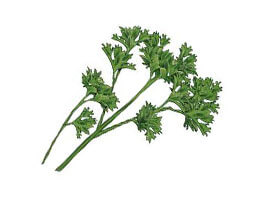Weather patterns for the past year have been driven by a remarkably strong El Niño event, but a change is on the way for the summer of 2016. As El Niño dissipates and La Niña conditions take its place, we will be in a period of transition in global weather patterns over the next few months.
This will have an impact on this summer’s weather, from temperatures to precipitation to tropical storms.
We expect to see some significant differences in this year’s temperature pattern compared to the past few summers. During 2013, 2014, and 2015 the focus of the heat was across across the West, with less than the typical amount of heat for most of the East. However, 2016 will feature a return more persistent heat in the East, with above normal temperatures dominating the summer pattern. The West will see areas of above normal temps as well, particularly the northern Plains and Intermountain region, but the heat should not be nearly as persistent or extreme as previous years.

Across the northern tier, particularly the Great Lakes and Northeast, we expect that there will still be a few more bumps along the road to summer with a couple periods of cooler weather during the first few weeks of June. However, by late June summer the heat will take hold and warmer than normal temperatures should dominate through July and August.
In the Southeast, temperatures have already been at or above normal for much of the spring. This should continue to be the case as we expect the usual hot and humid summer weather with a tendency towards above seasonal temperatures.
The South Central part of the country will see typical periods of summer heat, but more unsettled weather as well. With more clouds and rain than normal expected this season – particularly in the early part of the summer – the southern Plains should see temperatures average out near normal. In the northern Plains where drier conditions are more likely, above normal temperatures, but not excessive heat, are expected.
Some parts of the far West will be warmer than normal in the summer of 2016, particularly the Intermountain region. Coastal southern California is expected to be warm as well, where the heat will aggravate the ongoing exceptional drought conditions.
The northern California coast as well as the Pacific Northwest should see temperatures near normal for the summer. Warm waters in the northeastern Pacific will provide enough moisture for cloud cover and precipitation in the north to help keep the heat in check.

The Atlantic Basin Hurricane Season begins on June 1, and this year we expect to see a distinct uptick in tropical storm activity compared to the past three seasons. This is due in part to the developing La Niña, as well as temperature patterns in the North Atlantic.

In particular, this year’s active season is expected to be driven in part by the developing La Niña pattern, which tends to produce conditions favorable for storms to develop by reducing wind shear and increasing convergence in the lower atmosphere over the Atlantic Basin. In addition, if any storms do approach North America, warmer than normal water off the Atlantic and Gulf coasts could allow them to maintain their intensity or even strengthen.
As we move towards the end of summer and into the fall, we expect to see the developing La Niña to continue to strengthen, becoming the dominant driver of North American weather patterns in the second half of 2016. This will have impacts on the hurricane season, which peaks in mid-September, as well as on temperatures across North America.
In general, we expect the warm pattern from the summer to persist into the fall. This should mean above normal temperatures will be widespread well past Labor Day.
All information can be found at theweathernetwork.com








































 Adequate transportation is being reported from all regions with FTL rates. The national average price on diesel has started to increase. The average cost of diesel fuel is reported at $2.426 per gallon this week. Slight weather delays in certain areas.
Adequate transportation is being reported from all regions with FTL rates. The national average price on diesel has started to increase. The average cost of diesel fuel is reported at $2.426 per gallon this week. Slight weather delays in certain areas.



